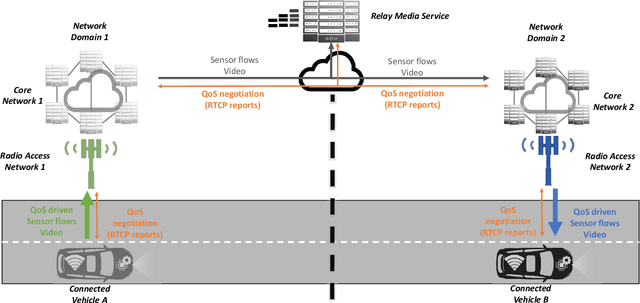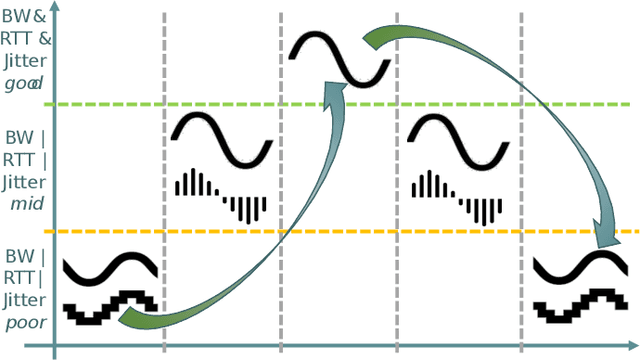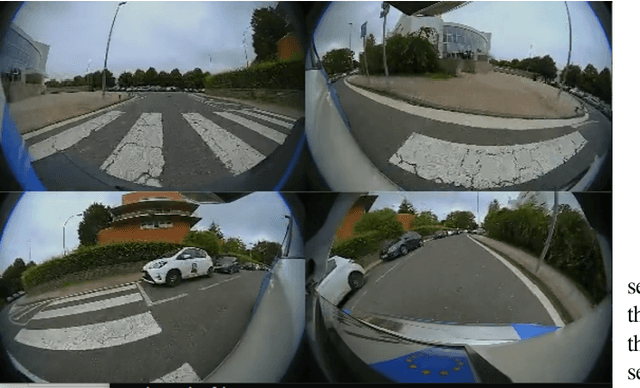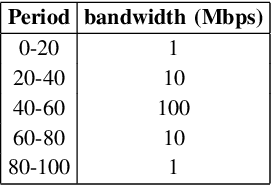Daniel Mejías
Adaptive QoS of WebRTC for Vehicular Media Communications
Aug 24, 2022



Abstract:Vehicles shipping sensors for onboard systems are gaining connectivity. This enables information sharing to realize a more comprehensive understanding of the environment. However, peer communication through public cellular networks brings multiple networking hurdles to address, needing in-network systems to relay communications and connect parties that cannot connect directly. Web Real-Time Communication (WebRTC) is a good candidate for media streaming across vehicles as it enables low latency communications, while bringing standard protocols to security handshake, discovering public IPs and transverse Network Address Translation (NAT) systems. However, the end-to-end Quality of Service (QoS) adaptation in an infrastructure where transmission and reception are decoupled by a relay, needs a mechanism to adapt the video stream to the network capacity efficiently. To this end, this paper investigates a mechanism to apply changes on resolution, framerate and bitrate by exploiting the Real Time Transport Control Protocol (RTCP) metrics, such as bandwidth and round-trip time. The solution aims to ensure that the receiving onboard system gets relevant information in time. The impact on end-to-end throughput efficiency and reaction time when applying different approaches to QoS adaptation are analyzed in a real 5G testbed.
 Add to Chrome
Add to Chrome Add to Firefox
Add to Firefox Add to Edge
Add to Edge